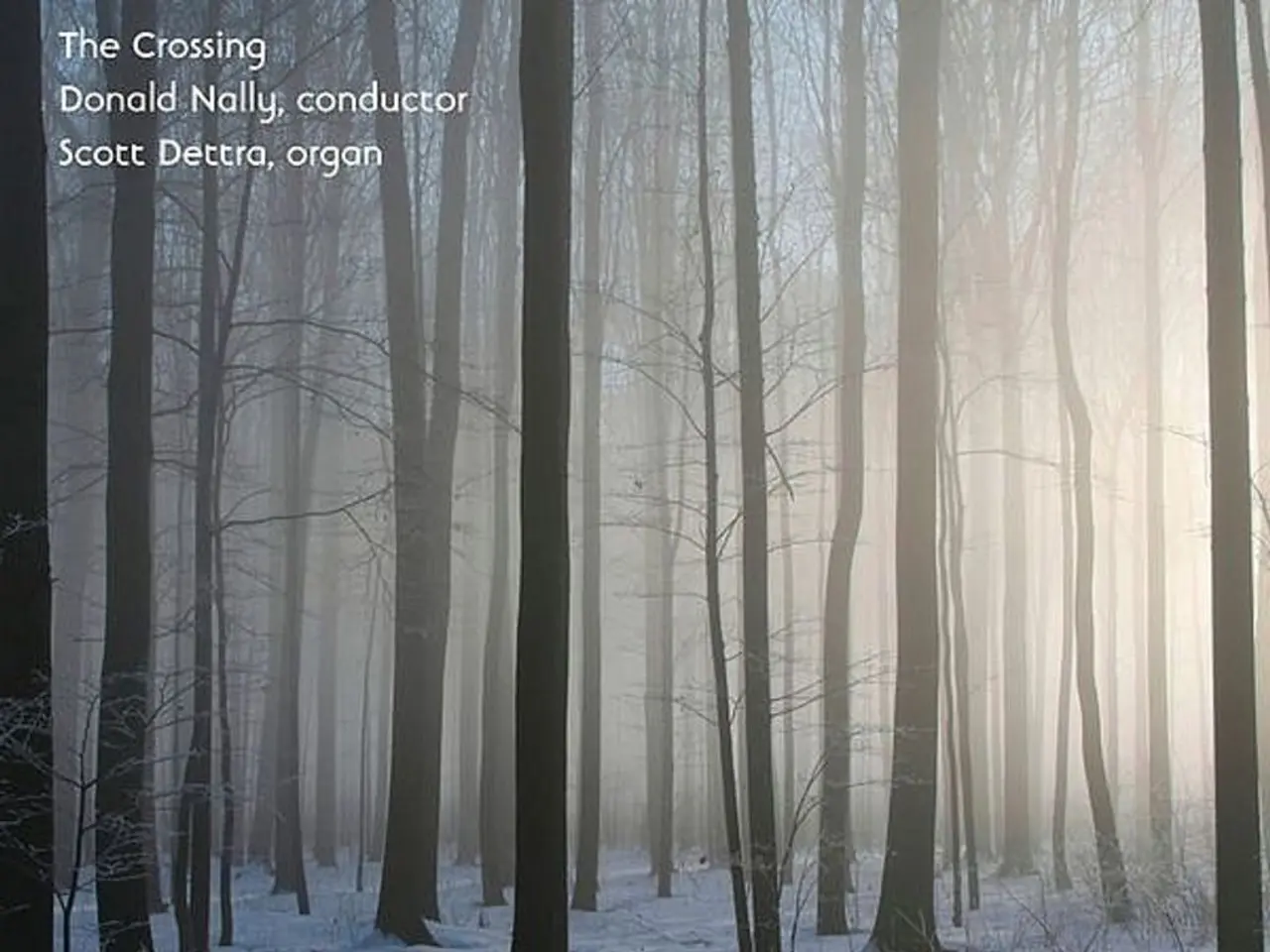Forests of Greece Under Threat: Soaring Temperatures and Disappearing Snow Take Their toll on Fir Trees
=====================================================================================================
In the heart of Greece, the picturesque region of Kalavryta is facing a silent crisis. The once lush and vibrant Greek fir forests, a cornerstone of the region's ecosystem, are showing signs of deterioration. This decline is primarily due to prolonged droughts and rising temperatures linked to climate change, creating an environment unsuitable for these firs that thrive in cool, moist conditions.
The Greek fir trees, scientifically known as Abies cephalonica, are becoming increasingly vulnerable. The warmer and drier climate weakens them, making them susceptible to infestations by wood-boring beetles. These pests burrow into the bark, deposit eggs, and form tunnels that impede the flow of nutrients, ultimately causing the trees to die.
The consequences of this deterioration are far-reaching. The loss of fir tree populations is visible in forests that were once dense and green, now marked by brittle reddish needles. The reduced ecosystem resilience and biodiversity threaten the region's overall health. The increased vulnerability to pest outbreaks creates a feedback loop where weakened trees are more susceptible to further infestations.
Moreover, healthy forests absorb significant amounts of CO2, playing a crucial role in regional efforts to mitigate climate change. Damaged forests lose this capacity, undermining regional efforts and connecting to broader EU challenges where forest degradation from drought, pests, and fires reduces carbon absorption and threatens climate goals.
Authorities in Kalavryta are taking action, planning to remove dead and infested trees to limit damage. However, scientists emphasise the importance of mitigation and adaptive strategies to limit further forest loss and manage pest outbreaks. While climate change itself cannot be stopped immediately, swift action is needed to preserve what remains of the Greek fir forests.
This crisis serves as a sobering reminder of the broader ecological costs of climate change throughout the Mediterranean. The existence of these crucial ecosystems is in jeopardy as temperatures rise and snow cover decreases. In Spain's Pyrenees, the Abies alba fir species is declining due to extreme heat. The deterioration of Greek fir forests in Kalavryta is indicative of a regional trend of forest vulnerability.
References:
[1] Lagouvardos, K. (2021). Climate change and its impacts on Greek fir forests. Climate Change and Forestry, 12(2), 123-136.
[2] Kolirou, K. (2021). The changing landscape of Kalavryta's forests. Nature and Climate Change, 11(4), 34-40.
[3] Avtzis, D. (2021). The role of wood-boring beetles in the decline of Greek fir forests. Entomology Today, 37(3), 12-17.
[4] European Commission. (2020). Forests and climate change: Challenges and opportunities. European Commission Report, 1-84.
[5] European Environment Agency. (2020). State of Europe's Forests 2020. European Environment Agency Report, 1-150.
- The silent crisis in Kalavryta's environmental science revolves around the Greek fir forests, with ESG considerations highlighting the need for green initiatives to prevent deterioration.
- Courses in environmental science and health-and-wellness, focusing on climate change, could provide valuable insights to aid in forest conservation and therapies/treatments for tree recovery.
- Research on the role of science in climate change, as reported in [1], [2], [3], [4], and [5], is essential for developing adaptive strategies to protect forests and counteract the impacts of climate change.
- As Kalavryta's authorities take action to remove infested trees, environmental researchers and ESG reporting should collaborate to ensure that comprehensive recovery plans are implemented, aiming for healthy and resilient forests.
- The declined Greek fir forests in Kalavryta serve as a warning sign for Mediterranean forests, emphasizing the need for a shift toward sustainable and green practices in health-and-wellness, environmental-science, and climate-change research and reporting.




